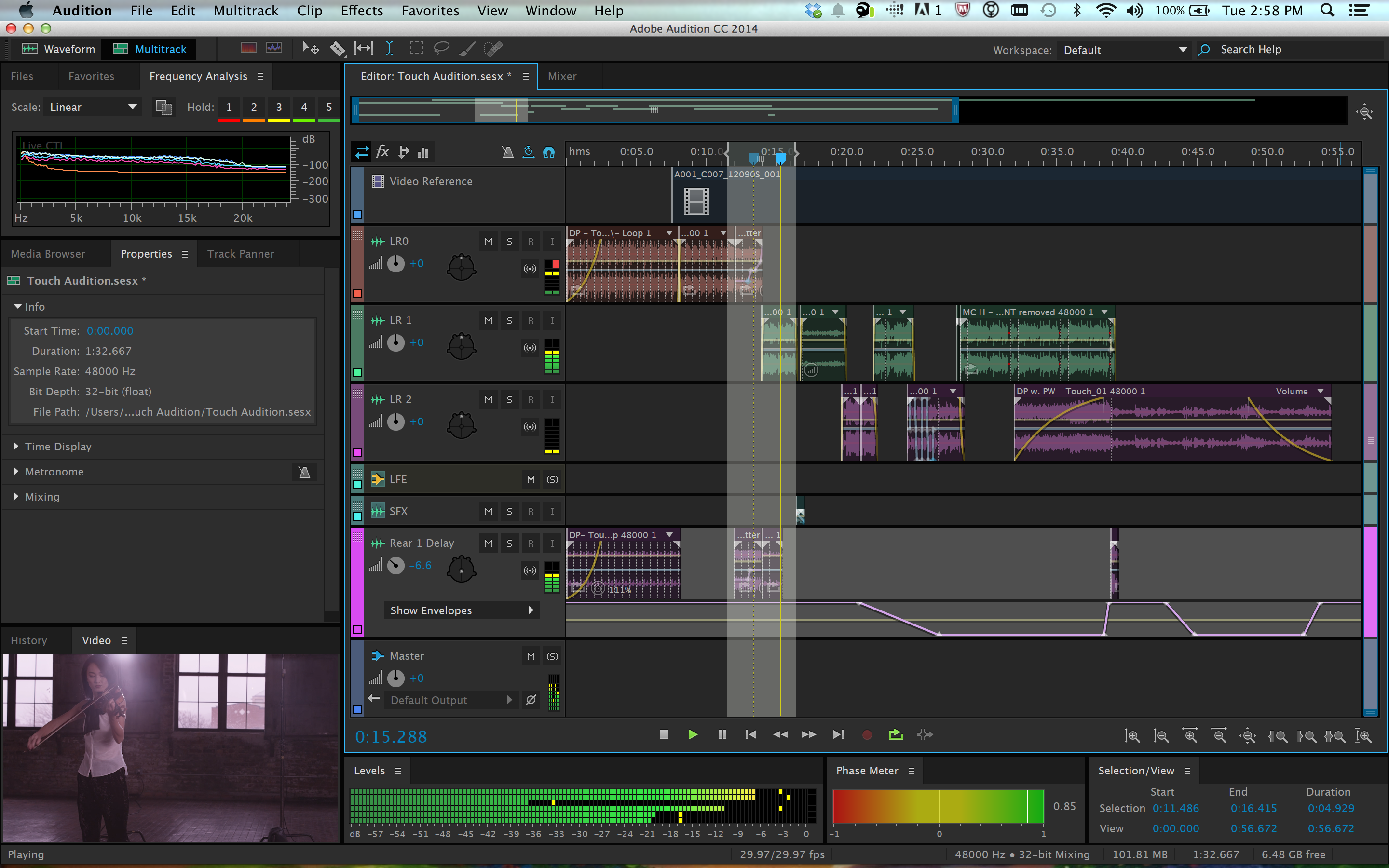Follow the steps in this article to learn how to connect to audio hardware in Audition. How do I record using Audition? Watch this video to learn how to record an audio file, including how to adjust recording levels and use playback controls.

I wonder if Adobe has any plan to EVER make AE capable of playing back audio in real time. I use alot of apps, many of which are not 'purposed' for playing audio yet somehow they all manage to be able playback an audio file without hacks. All except for After Effects. Driver: ASIO/Core Audio Price: $20/month. Adobe Audition (formerly known as Cool Edit Pro) is now Adobe’s flagship audio program. Soundbooth was discontinued and merged into Audition in the summer of 2011 combining the control and quality of Audition with the streamlines interface and workflow of Soundbooth. Adobe Audition is the perfect software for mixing and mastering audio content for movies, television, music, and podcasts. With a little editing, you can turn up the volume and master the perfect sound. Adobe Audition 2.0 is designed around a new ASIO playback engine which performs optimally when using a ASIO driver. Adobe highly recommends that the ASIO driver you use is specifically designed for the installed sound device instead of the default Audition Windows Sound driver.
Step 1: download & Install Virtual Audio Cable
from here https://vb-audio.com/Cable/
understanding VB cable settings
virtual audio cable:
Output = input or recording
input = playback
sound goes to output to >> input >> another hardware. (skype,)
Step 2: Configure sound settings on windows
Playback device: plays sound
Recording device:records
Recording device audio quality settings available at advance tab.
cross check match with input hardware device.
Step 3: Configuration at Adobe Audition

a. Adobe audio hardware properties
input device: actual hardware
output: virtual cable input default
default & master will be same.
microphone input >>Audition>>VB cable output>>
cable input >>at obs
In Multitrack session:

Select Mixer
Input device:
stereo: real input device usb audio codec
output: stereo >> cable input virtual Audio cable VB
Step 2:
Then Select R for Record
Then select I for Monitor
Monitor outputs sound vb cable.
vb cable as a input hardware for obs.
processed audio will come to OBS.
OBS Itself good for audio processing but audacity at professional level.
Troubleshooting
Two Different audio qualities not works together
my case: 16 bit mono 48k for input device
VB has setting for 24bit something not worked , so i changed to 16 bit 1 channel usually mics have only one 1 channel.
audio quality should be same
16 bit dvd or whatever the actually input hardproprties.
otherwise voice lose quality for editing.
just like compressing image.
16 bit 48K
Audio Hardware Adobe Auditions
Related topics:
Adobe Audition CC is an audio editing and creating software developed and published by Adobe Systems. When deciding to use the software, the first thing you need to ensure is whether your computer can run it. Luckily, Adobe Audition CC 2020 has surprisingly humble requirements for both Windows PC and Mac, at least for the minimum performance. Please check out the details below for clarity.
Windows PC
Minimum system requirements:
- OS: Windows 10 64-bit (version 1803 or higher)
- CPU: Intel Core 2-Duo
- RAM: 4 GB
- Free storage: 4 GB
- Monitor resolution: 1920 x 1080
- OpenGL: OpenGL 2.0 capable system
- Sound card: Sound card compatible with ASIO protocol, WASAPI, or Microsoft WDM/MME
Mac
Minimum system requirements:
- OS: macOS 10.12 or higher
- CPU: Multicore processor with 64-bit support
- RAM: 4 GB
- Free storage: 4 GB
- Monitor resolution: 1920 x 1080
- OpenGL: OpenGL 2.0–capable system; optional GPU for optimum video playback performance
Configurar Hardware De Audio Adobe Audition

Adobe Audition Audio Hardware Problem
Related Articles

Comments are closed.